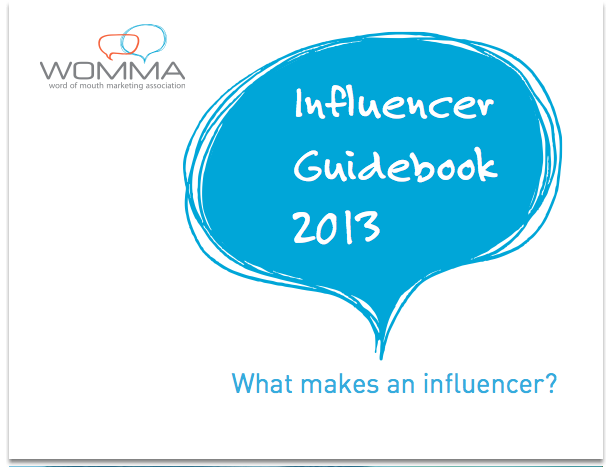WOMMA's new guidance on influencer marketing begins with the assertion: "This is not an update to the 2008 WOMMA Influencer Handbook - this is a complete rewrite ..."
I'm not a WOMMA member but I am a special adviser to AMEC and The Conclave, and it was in this capacity that Brad Fay and I invested more than a few hours with WOMMA's Neil Beam to lend our insight and points of view and, we hope, help make this guidebook the complete rewrite it's turned out to be.
I've expressed Euler Partners' approach to influence in recent posts, notably "Influence - request for comments" (slidestack included below for your convenience), and we were delighted to have the opportunity to present these to the WOMMA team. In particular:
7 billion influencers
There are, I'm told, 7 billion of us on the planet, so there are 7 billion influencers. The new phrase then for those considered to be more influential than others is "key influencer". This may sound like semantics, but behaviour is affected by language. If practitioners don't appreciate the complexity of influence they will be less effective in their consultancy and practice.
A cohort
The mathematicians and data scientists presenting their work at the ACM SIGKDD Conferences on Knowledge Discovery and Data Mining investigate what they call "influence maximisation" (see the slidestack for more information). Importantly, they've discovered that we can't readily attribute one individual with 'having' influence. We can only approach the problem by identifying a cohort of individuals who together may help the influence sought spread further than otherwise.
I'm particularly delighted then that there are seven references to "cohort" in the guidance.
Defining influence
We define influence as a change in opinion or behaviour. The guidance proposes: "The ability to cause or contribute to a change in opinion or behavior."
We still defer to our definition because it's the very outcome that so-called influencer marketers seek. Any quantitative attribution of influence being 'possessed' by an individual can only be qualified by looking for this outcome. This distinction has been recognised in the guidance however, and appropriately so:
"There are two distinct states of influencer measurement that are relative to the point in time an influencer marketing program begins: 1. The potential to influence (before); 2. Actual, observed influence (during/after)."
Reciprocity
So far so brilliant then. Yet we believe one thing is missing from the guidance, and from our experience of working with marketing practitioners and those intent on the excellence model of PR, this omission characterises the different emphases of the two disciplines.
We have a mantra: to influence better, be influenced better.
This reciprocity is not blatantly recognised let alone promoted in the guidance. The nearest thing to it comes in the listing of five key ethical principles: trust, integrity, respect, honesty, responsibility. You could argue that to build trust and demonstrate respect requires working as hard at being influenced by those that matter to you as trying to influence them. We think our mantra should stand alone from a pure effectiveness perspective however, and perhaps we can continue to exert influence as and when the guidance is next up for revision.
Visit www.womma.org/influencers now to get your copy of the guidebook.

Jessica Murray says:
Phillip,
Thank you for lending your knowledge to help making the 2013 Influencer Guidebook so successful!
31 May 2013 — 3:37 pm